Intel NUC 12 Pro “Wall Street Canyon” Performance
Instead of going through the entire Linux-Bench test suite, we are going to show a few performance and power numbers here to give a general sense of performance. This also gives us the opportunity to test with Linux/ Ubuntu instead of just Windows.
Python Linux 4.4.2 Kernel Compile Benchmark
This is one of the most requested benchmarks for STH over the past few years. The task was simple, we have a standard configuration file, the Linux 4.4.2 kernel from kernel.org, and make the standard auto-generated configuration utilizing every thread in the system. We are expressing results in terms of compiles per hour to make the results easier to read:
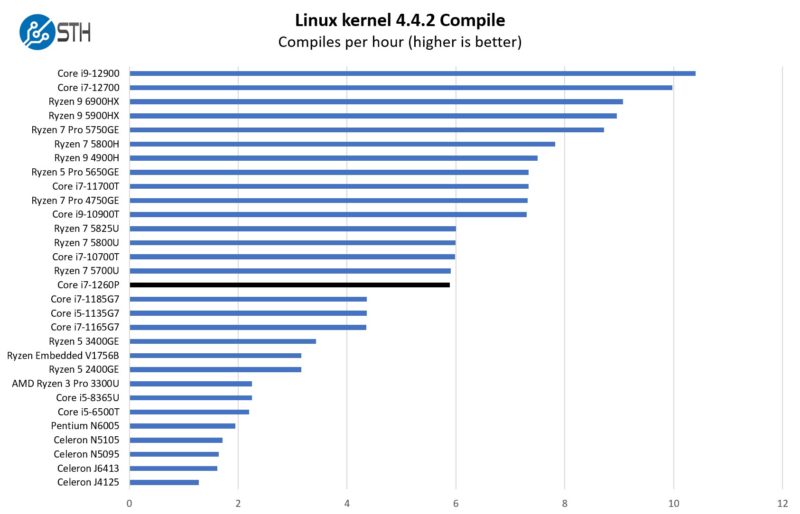
The Intel Core i7-1260P performs fairly well here, as a middle-of-the-pack option. As a quick note, there is a fairly large TDP delta now between these platforms, but it also means that sometimes if you need more performance, just getting a higher-TDP part can help a lot.
7-zip Compression Performance
7-zip is a widely used compression/ decompression program that works cross-platform. We started using the program during our early days with Windows testing. It is now part of Linux-Bench.

Here we see the Core i7-1260P outpace its AMD Ryzen 7 5800U counterpart. The P-core / E-core mix is really interesting.
OpenSSL Performance
OpenSSL is widely used to secure communications between servers. This is an important protocol in many server stacks. We first look at our sign tests:
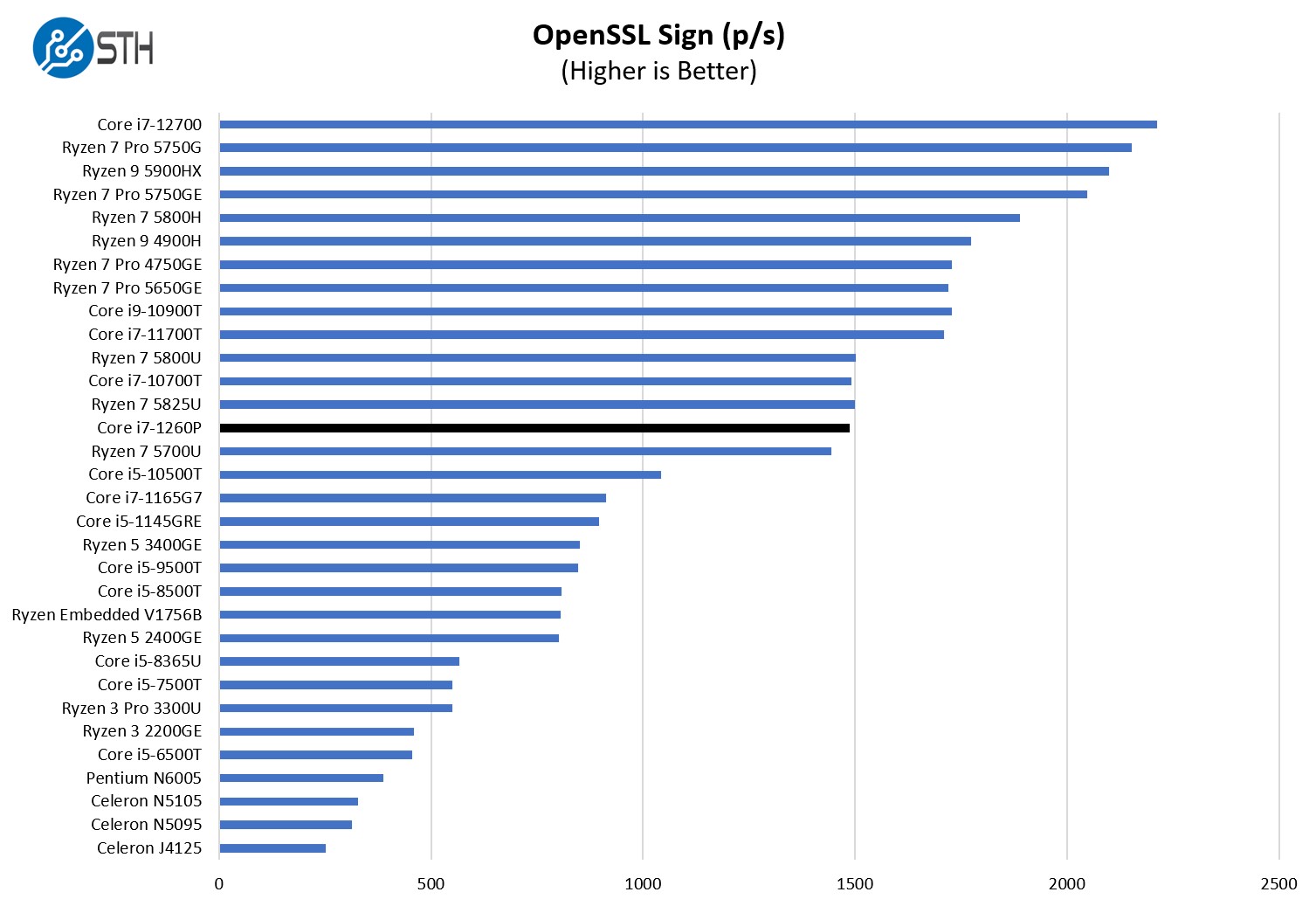
Here are the verify results:

Here is a good example of where we got better results in this Intel Core i7-1260P system than the ASRock NUC BOX-1260P Intel Core i7 NUC alternative.
Bleu Jour META 12 to Intel NUC 12 Pro Comparison
Just as a quick point of comparison, the Bleu Jour META 12 was the fanless unit, so we wanted to see how it compared.
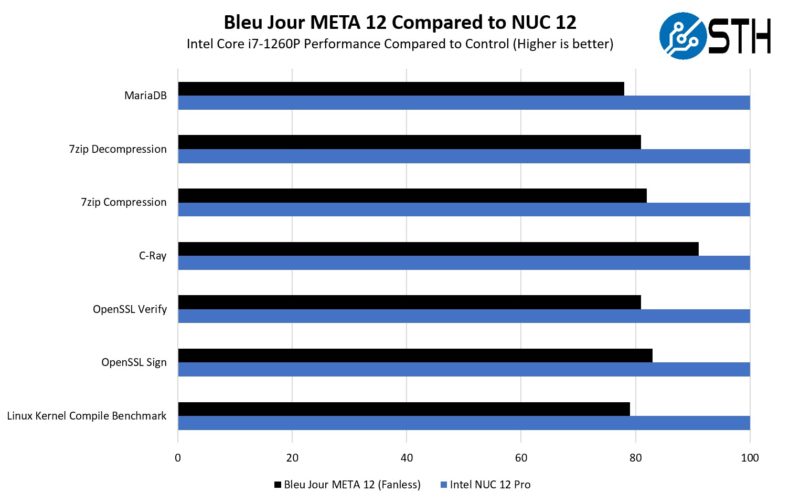
The unit was thermal throttling and was running in a lower power configuration so the performance took a notable hit. For many applications, losing 10-20% performance for lower power fanless operation is well worth it. The unit is able to stay cool at idle and light workloads, but under heavy workloads it heats up a lot and that hurts performance.
GeekBench 5 Results
Since we used GeekBench 5 to demonstrate the power consumption of the system in the video, we wanted to share a fun result here. We are getting Geekbench 5 performance beyond an Intel Xeon E5-2697 V4. That was a very high-end chip that would have been top-of-the-line in early 2017. Six years later, that massive CPU performance now fits in a CPU around the volume of a LGA2011-3 era 2U cooler.
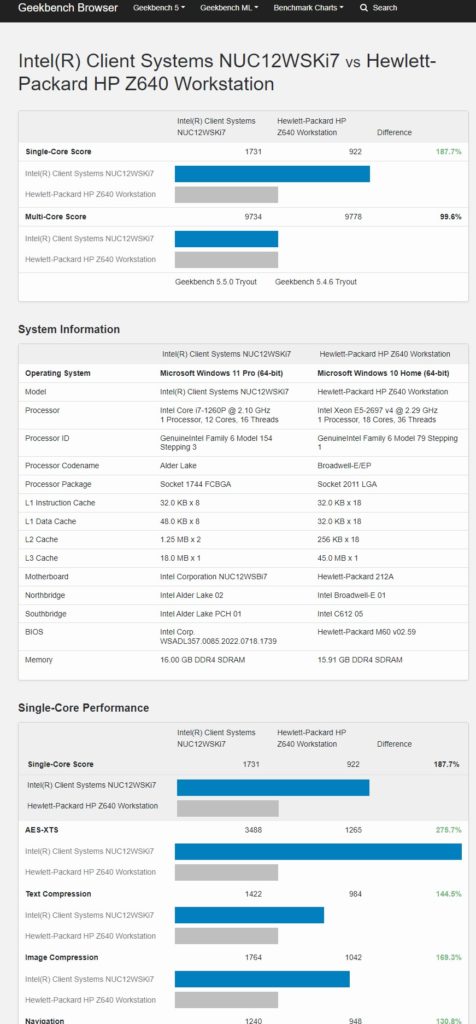
Just for fun, we also looked up a 2019-era Mac Pro with a 12-core/24-thread Intel Xeon W-3235 CPU. While Apple often discusses its silicon advances (there is a new Apple Mac Mini M2 in the video), Intel has come very far as well. For some reference, the CPU TDP of the W-3235 is 180W, or about twice the power of this entire NUC, and it was a $1538 list price part, more than twice this NUC.
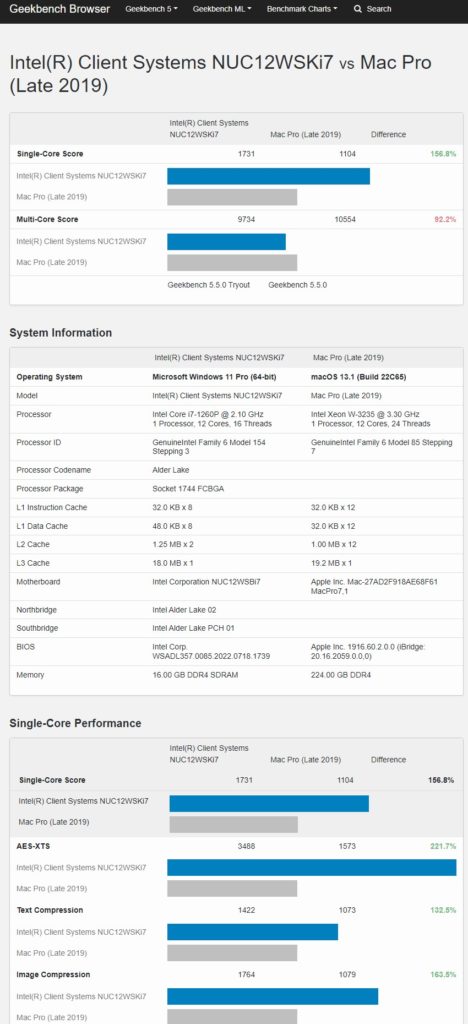
Those were just some fun ones that we saw while demonstrating the power consumption and noise of this system for the video.
Next, let us get to the power consumption, then our key lessons learned.

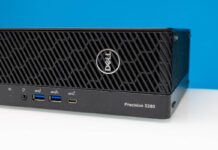

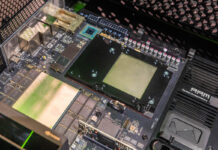
I’d say Intel needs to make a 50% bigger NUC just to add quieter cooling after listening to the video. That 115mm form factor isn’t cuttin’ it anymore. These are using more than twice the power of the old NUC.
Or add a big fan (would 120mm fit? Otherwise 92mm) to the fanless model and run it at very low speed. Should not be to hard to 3d print a adapter..
Small note, KC2500 is not PCI-e 4.0 but PCI-e 3.0.
‘We have a PCIe Gen4 NVMe SSD (Kingston KC2500) installed […]” should be
‘We have a PCIe Gen3 NVMe SSD (Kingston KC2500) installed […]”. Gen4 is KC3000.
“We should also quickly point out that this is an Alder Lake machine, so these will be i225 B3 parts, not the newer C stepping i226 parts with lower BER and power consumption.”
I’ve seen reports of some fairly nasty teething issues with some of the Intel 2.5GbE parts(I think it was i225 prior to B3?)
Are we at the point where, while the i226 is an improvement, any i225 or 226 that shows up in a reasonably reputable context(NUC, known-brand motherboards and laptops, etc.) can be relied on to have a non-broken stepping; or are there still units floating around that need to be specifically checked for problem parts?
fuzz everything has been B3 or later for more than a year.
I would change one USB-C for another ethernet port.
After so many NUC generations a quiet machine under “moderate” load should be mandatory. Its quiet on no load. Thats all.
And you buy “pro” and an i7 because you need “some” horsepower. A rather-silent under load NUC would be a no brainer for me. But they are not. AMD “nucs” are worse.
IMHO, the problem with NUCs is most laptops have better value on purchase and afterwards. For a hundred or so euros you have a keyboard/mouse, a display and a UPS. Which is a huge difference (vostros, thinkbooks, some latitudes, some thinkpads)
As a server are all advantages, plus you might have the option of a GPU, usefull for some loads.
As a office-desktop machine as well. Maybe you save some space if its mounted rear a display…
Thank you Michael – I was recording a video with a different system with a Gen4 Kingston drive that day.
I have NUC2WSHv7 and i am finding vpro AMT *extremely* unreliable. Both display emulation and display clone works maybe 1 in 5 times. Awful. The problem is both with MeshCommander and with Intel Manageability Commander.
Anyone with same experience?
@KLMR
notebookcheck reviewed some minisforum devices. Noise is slightlc lower than a standard NUC PRO 1260P for most of them, especially under load.
the chicken infrastructure link is dead
Are there any 12v connections on the motherboard that could support power to a single u.2 drive